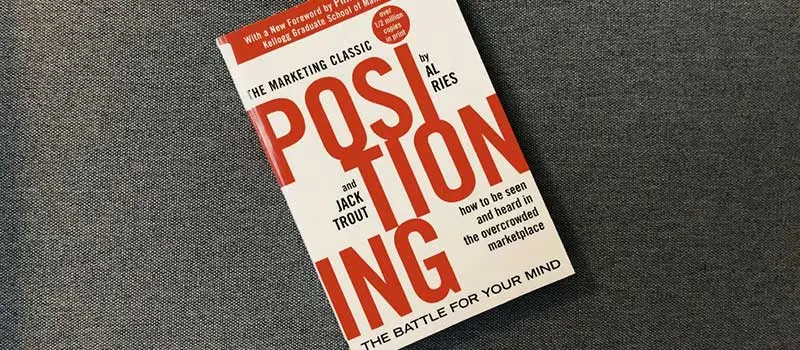Positioning Vs Differentiation vs
Distinctiveness
In recent years, there has been a growing debate in branding and marketing over differentiations vs distinctiveness and the impact they have on customers and how they choose their brands.
And this debate isn’t between just anyone with an opinion. These are legends in the world of marketing and branding and opinions span two extremes.
On one extreme you have those who believe the customers only buy from your brand because of your brand ideals.
On the other extreme, you have those who believe that customers only buy based on physical availability and how unique they look compared to the rest.
In this article, I want to look at these opinions, break down these extremes and look at what this means in the real world for everyday brand builders.

What Is Brand Positioning?

Brand positioning is the concept of a brand putting its flag in the ground as to what it wants to be remembered for by their audience.
Let’s break that down a little further with a definition
Brand Positioning Definition

Positioning refers to the place that a brand occupies in the minds of the customers and the reason it should be remembered.
Positioning: A Brattle For Your Mind

Positioning is a concept made famous by Al Reiss and Jack Trout in their classic book from the early 80’s “Positioning: The Battle For Your Mind”
The reason it was so ground breaking was that it took brands into the realm of science.
That the battle for superiority was a psychological battle fought in the mind and memories of the customer.

This book influenced much of what is taught a universities and has become the cornerstone message of branding and marketing texts the world over.
For the majority of branding and marketing professionals, this is a known law.
“The basic approach of positioning is not to create something new and different, but to manipulate what’s already up there in the mind. To retie the connections that already exist” – Al Reiss & Jack Trout
PRO Brand Strategy BluePrint
Build Brands Like A Pro Brand Strategist

What Is Brand Differentiation?

Brand differentiation is how brands set themselves apart from the competition by associating itself with an aspect of their offering that is uniquely different from their competitors
Explore Brand Strategy
Programs & Tools
Brand Differentiation Definition

Differentiation is the unique point of difference a brand provides it’s audience when compared to its competitors.
Differentiate Or Die

For many decades now, the message from the top of the marketing food chain has been Differentiate or die.
In other words, brands that did not take the time to distinguish themselves from the rest through a differentiation strategy had very little chance of being noticed.
The Unique Selling Proposition was the differentiation framework than many adhered to in coming up with their uniqueness that would guide all advertising and communication.
Even at this level, many have conflicting opinions
Simon Sinek: Start With Why

In 2009, Simon Sinek launched a book that would become an influencer of brand leaders the world over.
The book encouraged brands to “Start with why” and tap into not just what they do or how they do it, but why they do what they do.
The entire book is summed up well from the book’s most recited quote…
“People don’t buy what you do they buy what you do it. What you do simply proves what you believe” – Simon Sinek
Jim Stengel – Brand Ideals And Growth Are Inseparable

In 2011, former CMO of P&G Jim Stengel, one of the world’s most respected marketing minds, launched a book that backed up much of what Simon Sinek alluded to.
In this book, Stengel uses comprehensive studies of over 50k brands over a 10-year period to track the connection between financial performance, engagement, loyalty and advocacy.
His research showed that an investment in his “Stengel 50” brand index would have returned more that 400% more compared to the S&P 500.
“What we really need is a mindset shift that will make us relevant to todays consumers, a mindset shift from telling to selling to building relationships. Maximum growth and high ideals are not incompatible. They’re inseparable.” – Jim Stengel
Seth Godin – Be Remarkable

Seth Godin is one of the world’s most respected marketing voices.
He has written many influential books and his 2002 book “Purple Cow” threw a marker down for brands to “Be Remarkable”.
For Godin, he doesn’t believe that the old approach of mass marketing works anymore. That physical availability and distinctiveness won’t influence the consumer to choose your brand over your competitors.
For that, you need to be uniquely alternative and remarkable.
I believe we’ve now reached the point where we can no longer market directly to the masses.
Traditional approaches are now obsolete.
One hundred years of marketing thought are gone. Alternative approaches aren’t a novelty – they are all we’ve got left. – Seth Godin
What Is Brand Distinctiveness?

Brand distinctiveness is the brand’s ability to stand out visually so consumers can easily identify it.
Distinctiveness leads to brand salience which is the degree by which your brand is thought of in the buying decision. In Other words, the more visually distinctive your brand, the more chance your customers will buy it.
Brand Distinctiveness Definition

Brand distinctiveness is the visual uniqueness of a brand compared to it’s competitors across a range of visual brand assets.
Byron Sharp – Brands Grow Because Of Availability

Byron Sharp is a renowned marketing science professor at the Ehrenberg-Bass Institute of Marketing Science in South Australia.
In his 2010 book How Brands Grow, Byron Sharp takes a blow torch to traditional and widely accepted marketing methods to suggest that differentiation simply isn’t possible.
Through his scientific research and his empirical evidence, consumers spend very little time thinking about brands. Whether or not they buy is largely down to their physical and mental availability made possible by distribution and distinctiveness.

Through logos, colours, images and taglines and other distinctive brand assets, a brand can increase the quantity and quality of memory structures which has much more impact than a differentiated reason or ideal.
“The most important part of any buyer’s purchasing process occurs before buyers consciously evaluate which brands to choose: buyers, in effect, ‘decide’ not to consider the vast majority of brands on the market. Instead they notice only a few and quite often, only one”. – Byron Sharp
So Who’s Right?

Anyone could be forgiven for picking a side and pointing to the credentials, background and experience of their chosen expert as justification for their opinion.
I mean, these are heavyweights with completely opposing views so what are we to believe and how do we approach the brands we build?
Well, on the Jim Stengel and Simon Sinek side of the extreme,
it’s fair to say that people won’t simply buy why you do what you do. It’s just not enough. You need to give them something more than what you believe.
On the Byron Sharp side of the extreme,
I don’t believe that whether or not you’re physically available and are visually distinctive is the only reason you would buy a brand.
Branding Is About Providing Meaning

When it comes to branding and marketing, you need to form your own opinion and philosophy. Here’s mine.
In it’s most simplistic form, the premise of branding is about giving your audience meaning. This meaning ultimately becomes the reason your customers choose you in the buying decision.
Some may buy because of availability, some may buy because of distinctiveness, some may buy because of differentiation and some because of ideals.
Here’s how to give your brand the best possible chance to grow.
Step 1: Meaningful Attributes

Align your brand with meaningful attributes.
These are the characteristics your brand will be associated which should integrate the difference your brand offers when compared to your competitors.
These attributes are the seeds of understanding as to why your brand should be remembered, the role it plays in the lives of the customer and ultimately the value it offers.
Step 2: Distinctive Brand Assets

Develop unique and distinctive brand assets that cannot be confused with your competitors.
The more distinctive assets you have including logos, imagery, colour, audio, motion graphics, the more memory structures your create for your audience to prompt recall and recognition.
Step 3: Brand Associations

Outline the associations you want your audience to have with your brand.
These associations will include your meaningful attributes and your distinctive brand assets buy may include deeper experiential associations.
For example, you may align your brand with certain festivals, a specific country or traditions or a certain lifestyle.
Step 4: Alignment & Consistent Experience

Across all touchpoints, attributes, assets and associations, you must ensure alignment.
When we see that a person’s actions match their words it tells us they have integrity and they can be trusted.
Likewise with brands, when we feel alignment across the entire brand experience, we begin to believe that they’re a brand we can trust and that is the basis on which the most loved brands are built.
Over To You
It’s ironic that in an industry that requires clarity and simplicity, the perspectives and ideals of the industry practitioners and leaders are anything but.
Anyone looking from the outside in at the inter-industry discussion and debating would be within their rights that we need to come to a consensus.
I think a fair middle ground as brand builders is this:
On a strategic level provide brand meaning and availability
On a tactical level test, analyse and adjust.
Where do you stand on this debate or what are your thoughts on influencing your customers to buy your brand?
On-Demand Digital Program
Brand Master Secrets
Make the transition from hired-gun to highly valued brand strategist in less than 30 days. The systems, frameworks and tools inside this comprehensive program are all you need to level up.








